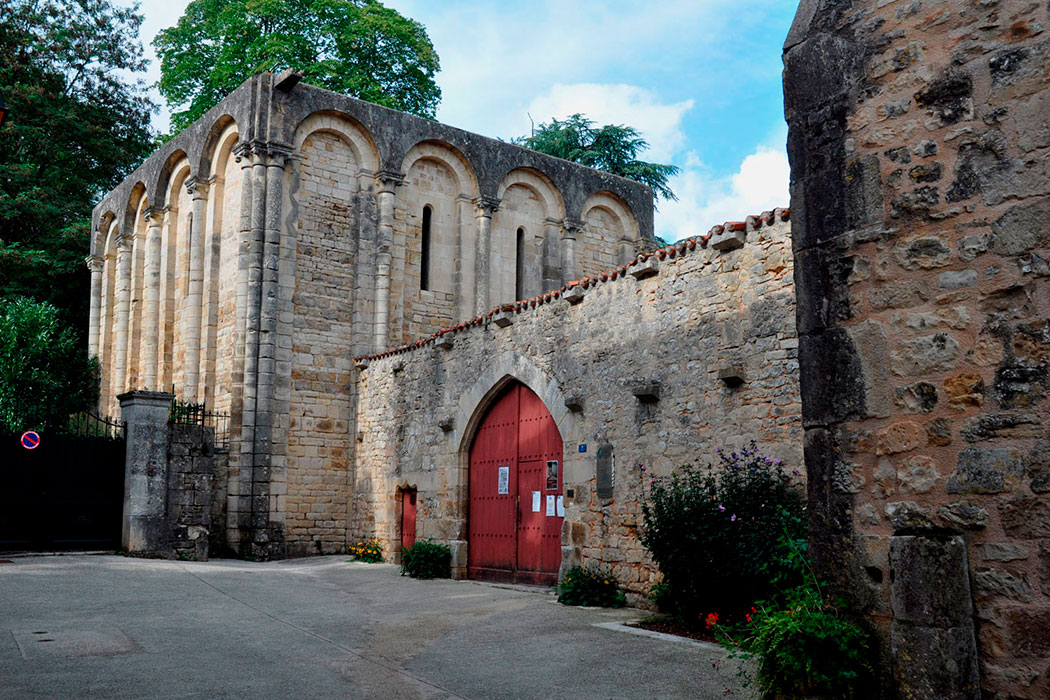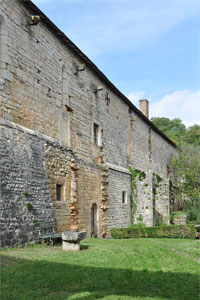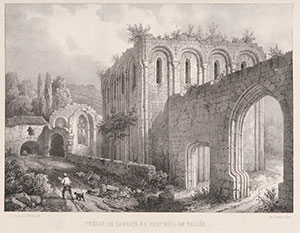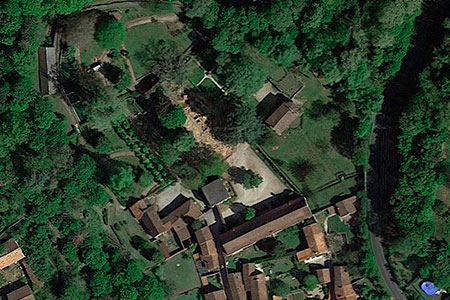Abbey of Notre-Dame de Nanteuil
Abbaye de Nanteuil / S Maria de Nantolium
(Nanteuil-en-Vallée, Charente)
Traditionally, the Benedictine abbey of Nanteuil is thought to have been founded during the Carolingian period on the site of an earlier hermitic establishment. This foundation has been attributed to Charlemagne himself and is usually dated to around the year 780. However, it may be more accurate to place its origins in the time of Charles the Bald († 877), who is said to have granted this “monastic cell” to the bishop of Bordeaux. That initial house later disappeared as a result of a Norman invasion.
The monastery was restored in the late 10th century by Guillaume le Noble and placed under the authority of the abbey of Saint-Cyprien de Poitiers (Vienne). From the 11th century onwards, it entered a period of prosperity. The Chronicle of Saint-Maixent reports that in 1046 the church was rebuilt; this work was expanded at the end of the same century and continued into the 12th. In 1304, the archbishop of Bordeaux, Bertrand de Got, visited Nanteuil; the following year, he was elected pope under the name Clement V. In 1305, Clement V issued a bull confirming the monastery’s possessions and placed it under the protection of the Holy See. Among other assets, the priory of Saint-Denis de Montmoreau depended on this abbey.
During the Hundred Years’ War, the monastery was fortified, though this did not prevent it from being looted and burned in the mid-15th century. In the second half of that century, efforts were made to restore the community and the monastery buildings, including the church, which had been badly damaged. The introduction of the commendatory system in 1530, along with the Wars of Religion, hindered its recovery. From then on, the house survived only precariously until its suppression in 1770.

Treasure Tower
Photo by Henri Heuzé (1919)
Ministère de la Culture (France)
Médiathèque de l'architecture et du patrimoine, diffusion RMN-GP
After the Revolution, the monastery was sold, and during the 19th century most of its buildings were demolished. Today, the site belongs to the municipality of Nanteuil-en-Vallée, which has enabled archaeological work and studies of the abbey remains. Some structures have been preserved, among them the so-called Treasure Tower, which may date from the first half of the 12th century. Nearby stands another old building identified as a pilgrims' hostel.
- BARBIER, Emmanuel (2019). Nanteuil-en-Vallée (Charente). Abbaye de Nanteuil-en-Vallée. Archéologie médiévale, núm. 49
- BEAUNIER, Dom (1910). Abbayes et prieurés de l'ancienne France. Vol. 3: Auch, Bordeaux. Abbaye de Ligugé
- DUBOURG-NOVES, Pierre (1999). Les vestiges de l'abbaye de Nanteuil-en-Vallée. Congrès archéologique de France, 153 ss. Société française d'archéologie
- MICHON, Jean Hippolyte (1844). Statistique monumentale de la Charente. París: Derache
- REMPNOULX-DUVIGNAUD, M. (1886). L'abbaye de Nanteuil-en-Vallée (Angoumois, diocèse de Poitiers). Bulletin de la Société archéologique et historique de la Charente, vol. VIII
- SAINT-MAUR, Congregació de (1720). Gallia Christiana in provincias ecclesiasticas distributa. Vol. 2. París: Typographia Regia




